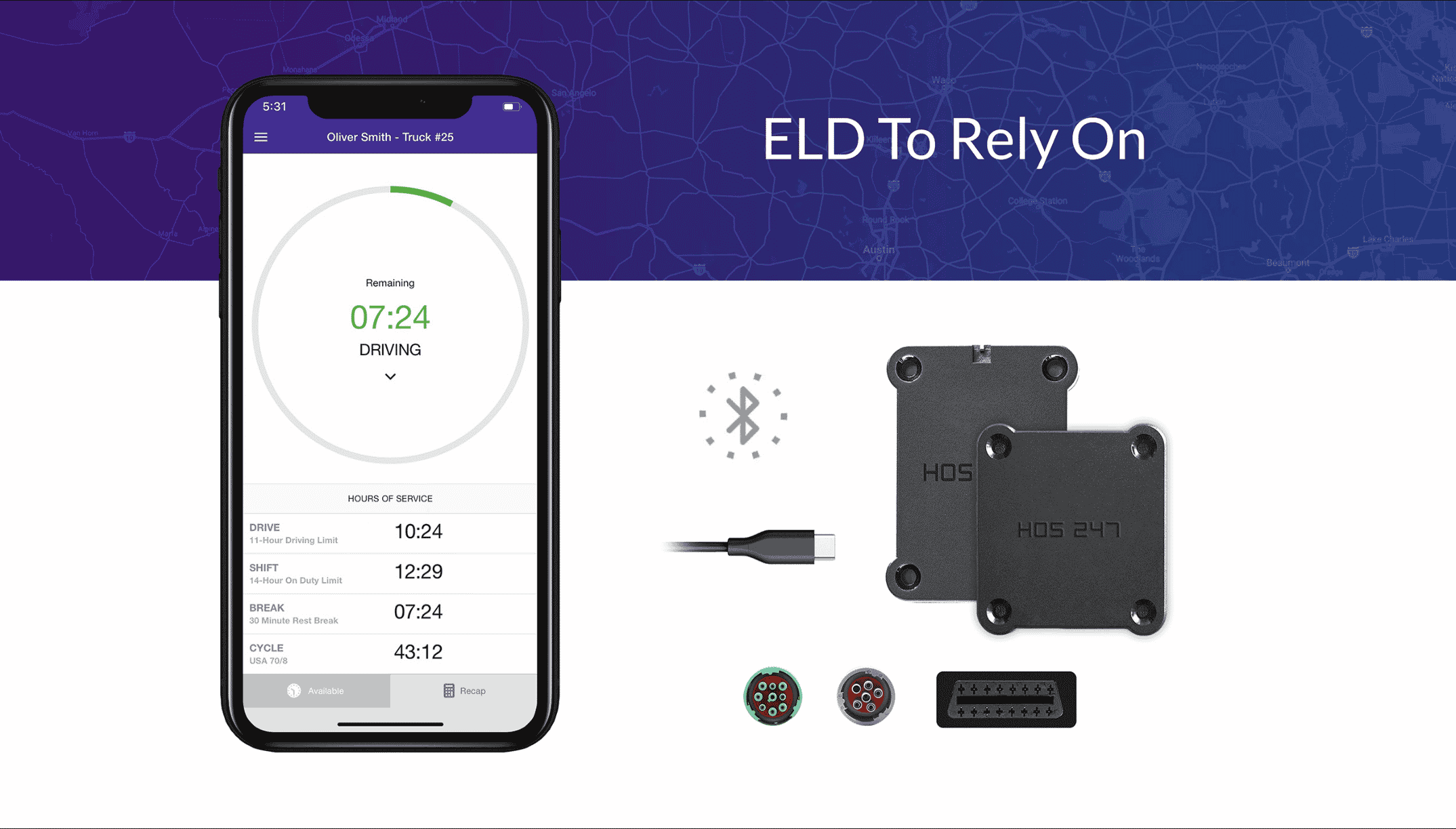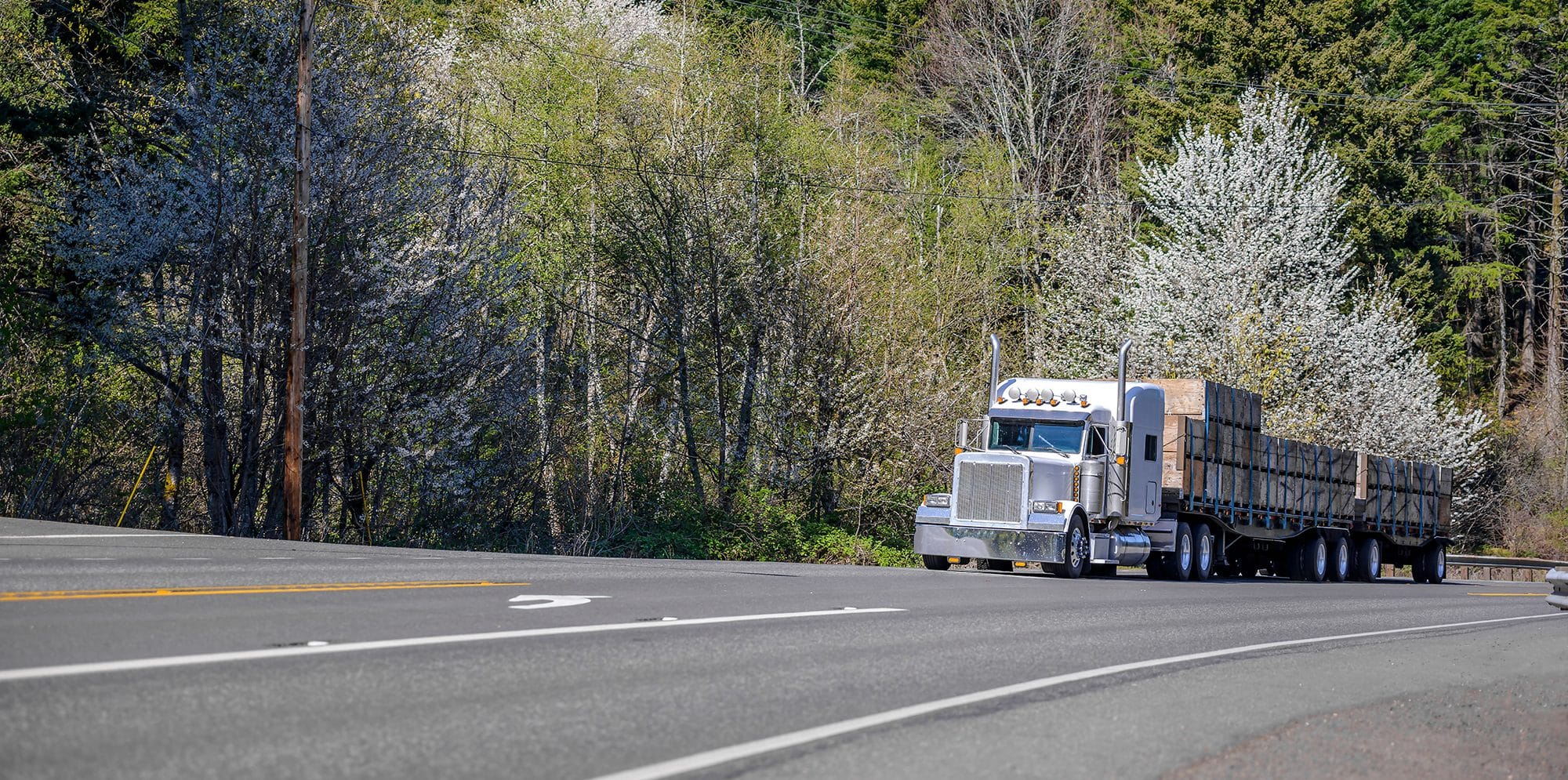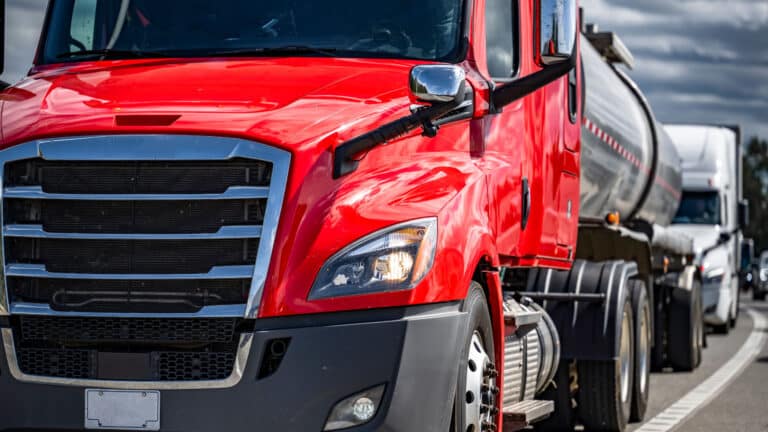Commercial trucking operations, including everyone from large carriers to owner-operators, are subject to the electronic logging device rule and will require ELDs to operate legally. This requirement came into effect on June 12, 2021, with a full implementation date of January 1, 2023. By this date, any commercial operators not using an electronic logbook to record hours of service will be considered noncompliant and will face penalties. It is important that carriers be familiar with the new elog rules and regulations to avoid fines and costly delays during runs.
Industry Leader in Electronic Logging Devices for Drivers
The following article about the ELD mandate and compliance has been prepared by the HOS247 team, industry leader specializing in electronic logbook compliance. We provide comprehensive solutions to fleets of any size. Our top-rated elogs provide truckers with reliable hardware and a user friendly app to prevent hours of service violations.
Canadian ELD Mandate
The Canadian ELD mandate has been coming for some years now. Come June 12, 2022, Transport Canada will require most commercial vehicle drivers subject to HOS rules to record driving hours using electronic logging devices. The reason for this regulation is to make sure drivers abide by hours of service rules to avoid fatigue. This, in turn, is expected to reduce accidents and bring benefits amounting to $380 million.
Electronic logbooks automatically record data pertaining to records of duty status by connecting to the engine. These devices are installed on a vehicle and can be viewed by drivers, accessed remotely by dispatchers and fleet managers, or reviewed by safety officials during roadside inspections.

Who Is Required to Comply with the ELD Mandate?
Most commercial drivers who are required to maintain RODS will also be required to comply with the elog mandate. This refers to drivers who travel across provinces for commercial purposes.
Carries must equip vehicles with electronic logbooks unless they are subject to one the following exemptions:
- Holding a specific permit.
- Having a statutory exemption.
- Driving a rented vehicle (as long as the agreement is for 30 days or less).
- Driving a vehicle manufactured before 2000.
Be aware that even if a carrier is not legally obligated to follow the ELD rules it may pay big dividends to follow these regulations because of the automation of daily operations and the safety of the fleet.

Are owner-operators required to comply?
Yes, even single truck operation must comply with the ELD mandate if they file RODS. HOS247 offers ELD solutions for owner-operators that are both flexible and affordable so they aren’t stuck with expensive features better suited for larger fleets.
Are large carriers with AOBRDs required to use ELDs??
Larger carriers with AOBRDs (Automatic On-Board Recording Devices) will be required to follow the ELD mandate come the full enforcement deadline on June 12, 2022. Unlike the mandate in the United States, the Canadian rules do not consider a grandfather period. If a carrier doesn’t fall into one of the exemption categories above, it’s important they are following the Transport Canada rule to avoid expensive fines and delays on runs.
Electronic Logbooks Must Support HOS Rules
In addition to complying with the ELD mandate rules, logbooks must be programmed according to hours of service regulations. In Canada, drivers can work on a cycle of 70 hours in 7 days (Cycle 1) or 120 hours in 14 days (Cycle 2). Also, different HOS rules apply for the regions north and south of latitude 60°N.
South of 60:
- Driving time is restricted to 13 hours per day or work shift. Before driving again, they must be off duty for at least 8 consecutive hours.
- Driving is not allowed after a driver has been on duty for 14 hours. On duty but non-driving status is allowed.
- Driving is not allowed after 16 hours have passed since the last eight consecutive hours of off-duty time.
- Drivers must be off duty for at least 10 hours per day.
- Apart from the 8 consecutive hours, off-duty time should be spread in 30 minute blocks.
- Drivers must have one period of at least 24 consecutive off-duty hours every 14-day cycle.
- Hours of service can be reset to zero by taking 36 consecutive off-duty hours for Cycle 1 or 72 for Cycle 2.
- Yard move, adverse driving, off-duty deferral, and personal conveyance (up to 75 km per day) are supported.
- Single driver and team driving split sleeper berths are supported.

North of 60:
- Driving time is restricted to 15 hours per day or work shift. Before driving again, they must be off duty for at least 8 consecutive hours.
- Driving is not allowed after a driver has been on duty for 18 hours.
- Driving is not allowed after 20 hours have passed since the last eight or more consecutive hours of off-duty time.
- Yard move, adverse driving and personal conveyance (up to 75 km per day) are supported.
- Single driver split sleeper berth is supported, but not team driving split.
All CMV drivers must abide by these rules, except for:
- Emergency vehicles.
- Vehicles used for public relief in case of emergencies.
- Commercial vehicles used for operations of a farm, forest, sea, or lake. These can be transporting products derived from such planes or products used for the corresponding operations, or returning empty from a delivery.
Beyond ELD – How to Profit in Trucking
HOS247 is an industry leader in electronic logging devices that keeps carriers comply with federal requirements. Beyond compliance, our logbooks offer advanced features to help increase profitability for trucking businesses. We help carriers make informed decisions by giving a 360 view of operations so carriers can confirm driver, vehicle, and trailer availability with a few clicks. Fleet managers can ensure drivers are on schedule and share more accurate ETAs with customers. Additionally, you can upscale your plan to include automated IFTA calculations to eliminate administrative overhead and facilitate tax reporting. Other extra features such as GPS tracking and vehicle diagnostics are also available. HOS247 helps all sized fleets and owner-operators comply with ELD rules and increase profitability.

I’ve co-founded, built and managed several transportation-related businesses. Now, I’m a founder and CEO of HOS247 – an AI Transportation Platform for trucking companies, freight brokers and other logistics operations. We are transitioning old-style operations to technology-advanced logistics entities and help them to grow their businesses. ELDs (electronic logging devices), fleet tracking and management 2.0 combined with AI-powered dispatch tools.










In today’s dynamic business environment, where efficient operations and cost savings are crucial, fleet tracking has become a vital solution for trucking businesses. This technology uses GPS and advanced fleet management systems to monitor and manage vehicles in real time,

GPS tracking has become a valuable tool for truckers looking to protect their assets and maximize profits. Its ability to provide real-time location and other critical information is transforming how fleets are managed. From bolstering efficiency to enhancing security and

If you are a fleet owner, you know the struggle of managing a large number of vehicles, ensuring timely deliveries, and complying with industry regulations. These challenges can be even more daunting when you consider the complexities of the modern
